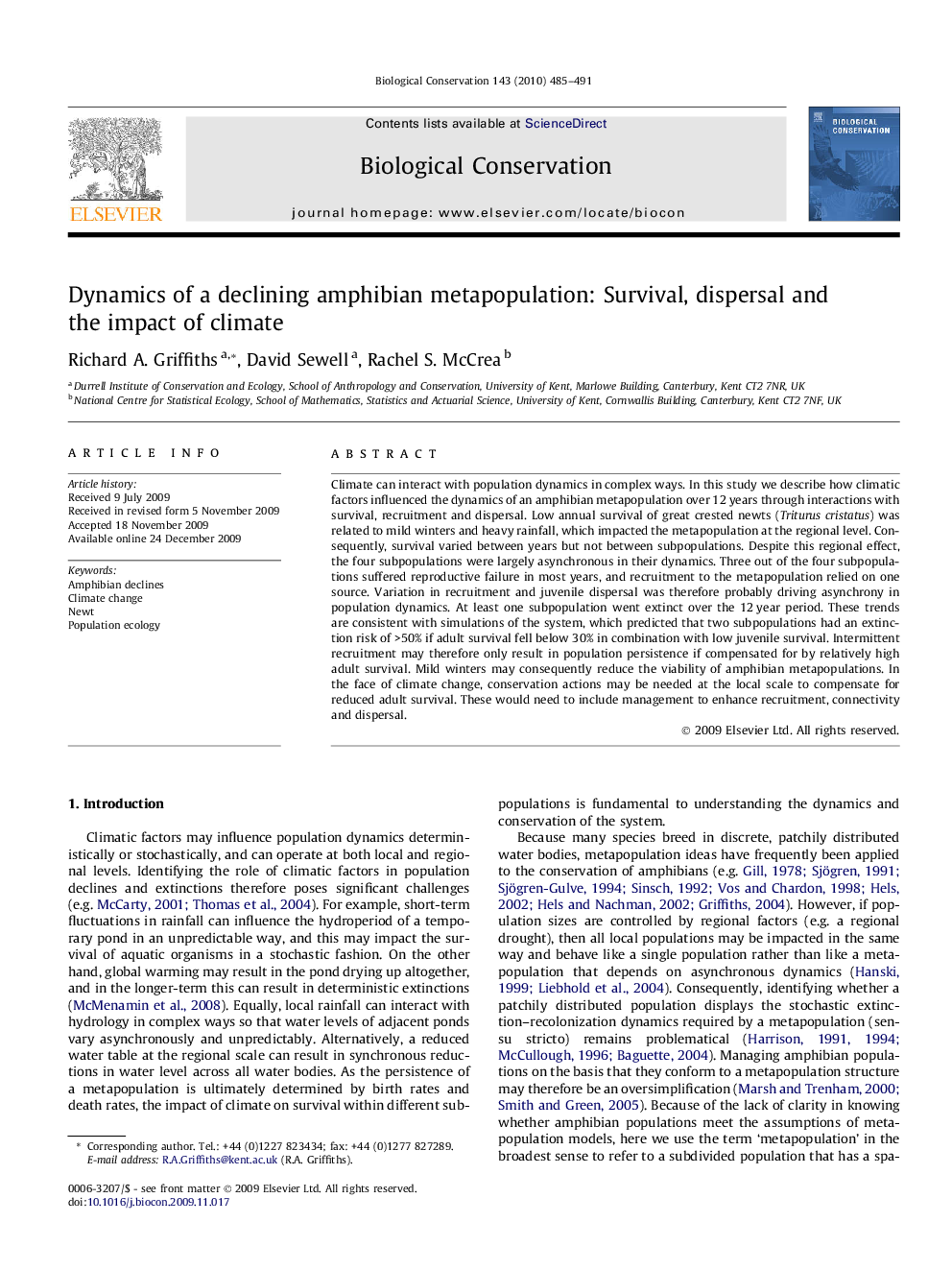| کد مقاله | کد نشریه | سال انتشار | مقاله انگلیسی | نسخه تمام متن |
|---|---|---|---|---|
| 4386521 | 1304568 | 2010 | 7 صفحه PDF | دانلود رایگان |

Climate can interact with population dynamics in complex ways. In this study we describe how climatic factors influenced the dynamics of an amphibian metapopulation over 12 years through interactions with survival, recruitment and dispersal. Low annual survival of great crested newts (Triturus cristatus) was related to mild winters and heavy rainfall, which impacted the metapopulation at the regional level. Consequently, survival varied between years but not between subpopulations. Despite this regional effect, the four subpopulations were largely asynchronous in their dynamics. Three out of the four subpopulations suffered reproductive failure in most years, and recruitment to the metapopulation relied on one source. Variation in recruitment and juvenile dispersal was therefore probably driving asynchrony in population dynamics. At least one subpopulation went extinct over the 12 year period. These trends are consistent with simulations of the system, which predicted that two subpopulations had an extinction risk of >50% if adult survival fell below 30% in combination with low juvenile survival. Intermittent recruitment may therefore only result in population persistence if compensated for by relatively high adult survival. Mild winters may consequently reduce the viability of amphibian metapopulations. In the face of climate change, conservation actions may be needed at the local scale to compensate for reduced adult survival. These would need to include management to enhance recruitment, connectivity and dispersal.
Journal: Biological Conservation - Volume 143, Issue 2, February 2010, Pages 485–491